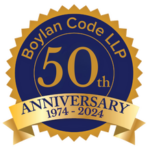Put aside for a moment the creepiness most of us have experienced in immediately seeing an ad on Facebook for an item you were shopping for moment earlier on another site.
Put aside for a moment the unsettling fact that Google scans your emails for content keywords in order to sell your information to advertisers. These incidents represent only the impact of technology on the present.
Imagine, instead, a future in which otherwise closed trial proceedings or jury deliberations are at risk of being surreptitiously video recorded or even live-streamed by its participants – attorneys, in-court personnel, jurors – to third-parties or Internet audiences, through the use of miniscule or undetectable implanted recording devices. These devices store or relay information on hidden RFID devices capable of wirelessly transmitting to a nearby smart phone capable of broadcasting to recipients over the Internet. Multiple camera angles or perspectives could be available “on-the fly”, like some sort of sporting event, switchable at the click of a button. Confidential information – witness identities, medical records, trade secrets – would be at risk of disclosure to entities bent on obtaining them. Corporations have limitless funds to invest in technology, but is the judicial process ready for such challenges?
Imagine alternatively the sanctioned use of such devices to aid attorneys at trial, connected to Google’s vast information repositories, capable of instantly recalling information, based on visual cues or facial recognition, regarding witnesses, jurors or evidence; while powerful, the allowance or implementation of such technology has the potential to create and increase a disparity in access to such technology among attorneys – the haves and the have-nots, adversely impacting an attorneys’ ability to provide adequate legal services and the rights of clients without the wherewithal to afford the use of such technology.
Do these scenarios sound like unrealistic science fiction? They represent a possible future that is not far off. Cybernetic video recording devices may be a trope of science fiction, but science fiction is rooted in science, not fantasy, and the ever quickening rate of technological advancement has allowed the current trend in wearable technology – devices such as Google Glass and Samsung’s Galaxy Gear watch – which have audio/video recording and transmitting capabilities, to legitimately raise the question of what is to be done, or what can be done, to preserve confidentiality or privacy in a future increasingly subject to public disclosure. It is not a stretch of the imagination to suggest that the power and immediacy of information brought forth by such technology will likely change the face of the law and how it is carried out by the legal profession. The adage that the law does not keep pace with technology does not mean that policymakers should be satisfied only with dealing with the legal and ethical impacts of current technological advances, in ignorance of projecting future possibilities.
Privacy and publicity rights vary from jurisdiction to jurisdiction, but technology has no regard for jurisdictional boundaries. In New York, Civil Rights Law Sections 50 and 51, and Article 250 of the Penal Law set forth the limits of our privacy rights. Civil Rights Law Sections 50 and 51 prohibit the unauthorized use of one’s image or likeness for business purposes (with the notable exception of “newsworthy” matters, or matters in the public interest). It is narrowly construed in favor of public interest items. Article 250 of the Penal Law sets forth a “one-party consent” law, and establishes criminal liability for unlawful eavesdropping and surveillance. In addition to these laws, jurisdictions differ on the extent to which recording devices and cell phones are permitted in court proceedings and deliberation rooms. In today’s world these laws are easy to enforce and such devices are relatively easy to discover and prohibit or confiscate. Even devices like Google Glass are presently easily seen due to their unique physical form factor, and therefore easy to ban in places like casinos, courts, and theaters. But such will not always be the case; it is merely a question of form factors, and technology has never been limited by form factors.
While the Civil Rights Law and the Penal Law would impose civil and criminal liability, and are ostensibly adequate for our times now, these laws reflect, and are necessarily limited by their twentieth century origins. What does being “newsworthy”, or in the “public interest” mean, in this twenty-first century, where surveillance itself is cause célèbre, the Internet can inject anyone into the public eye overnight, where everything is potentially “newsworthy” to the always-on news eye? The day quickly approaches when technology will make the above scenarios feasible; once the wall is breached, there will be no looking back. Are the current laws sufficient to protect our rights?
Ultimately, the relevant question is not about the appropriate punishment for such surreptitious conduct; after all punishment mechanisms are inherently reactive. Contempt, monetary penalties, or imprisonment may provide cold comfort to the victimized party whose identity, medical information, or trade secrets are disclosed. Moreover, the harm to the judicial process itself is similarly unquantifiable – whether due to a mistrial if the conduct is discovered early, or due to it not being discovered until long after a verdict is rendered.
The relevant question, instead, is a philosophical, policy-oriented one that necessitates acknowledging the fact that technology will soon reach a point where smart phones and wearable devices themselves become redundant in favor of implanted and ubiquitous cybernetic devices; a closer consideration of how privacy or confidentiality can or should be enforced in judicial proceedings, and in society at large. This will likely require a sea-change in what we as a society will formally deem socially acceptable; even today traditional notions of privacy are being eroded.
Let us return to my original hypothetical; perhaps unbeknownst to many, we have already begun far down the path to its realization. The seeds for such advances already exist. Sites like Justin.tv have been live streaming events since 2007. Google Glass itself is but a form factor; its power lies in its software and connectivity. RFID implants are now capable of far more than biometric identification of your pets; in 2012 the ability to actually use them to store data wirelessly accessible by smart phone was demonstrated. Combine all of these existing technologies, allow for form factor advances over time, connect them, and the arrival point is a vast unknown that deserves our full attention and a revisiting of existing laws to suit the potentially changing face of the practice of law and public policy.
David K. Hou is a Partner at Boylan Code LLP, concentrating his practice on Commercial Litigation, Employment Law and Intellectual Property matters. For more information, please contact David at (585) 232-5300 or dhou@boylancode.com.


